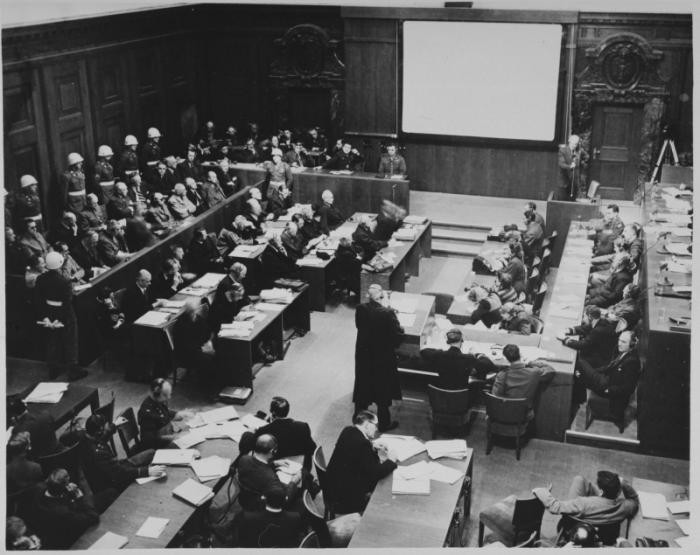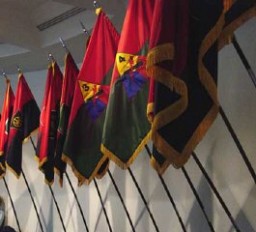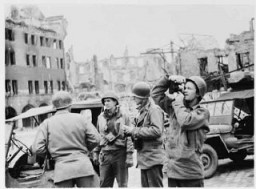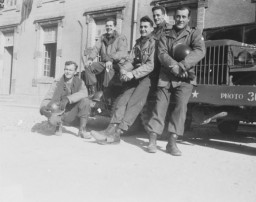
"We will show you their own films": Film at the Nuremberg Trial
During the International Military Tribunal (IMT), Nazi Germany’s dedicated filming of itself was turned into film evidence of its crimes. From the earliest beginnings of the Nazi Party in the 1920s, through the military invasions of World War II, and even graphic depictions of atrocities, German camera crews recorded (often proudly) what they accomplished in pursuit of their ideology.
Near the end of the war, teams of Allied military personnel worked tirelessly to locate and gather this film footage. These films were then edited in Berlin. Adolf Hitler’s favorite propaganda filmmaker, Leni Riefenstahl, was forced into service as this body of film was organized into evidence for postwar trials. As US Chief Prosecutor Robert Jackson stated in his opening statement to the IMT, "We will show you their own films."
Film Presented as Evidence: "The Nazi Plan"
During World War II, United States Army Signal Corps units played a key role in documenting combat missions. Noted Hollywood producers, directors, and photographers (such as Darryl Zanuck, Frank Capra, John Huston, and George Stevens) all served in the Signal Corps during the war. In 1943, General Dwight D. Eisenhower charged American filmmaker Stevens with directing teams filming the advance of US. forces, eventually including the liberation of the concentration camps.
On November 29, 1945, only a week into the trial, the IMT prosecution introduced an hour-long film titled "The Nazi Concentration Camps." When the lights came up in the Palace of Justice all assembled sat in silence. The human impact of this visual evidence was a turning point in the Nuremberg trial. It brought the Holocaust into the courtroom.
Series: Liberation of Nazi Camps: Encountering and Documenting Atrocities
Critical Thinking Questions
- Beyond the verdicts, what impact did the trials have?
- Besides military participants, what other professionals were charged with crimes in the wake of the Holocaust? How did national histories, agendas, and priorities affect the effort to try war criminals after the war?
- The International Military Tribunal at Nuremberg is the best known of postwar trials. Investigate trials conducted by individual countries in the late 1940s.
- Why do perpetrators document their actions?





